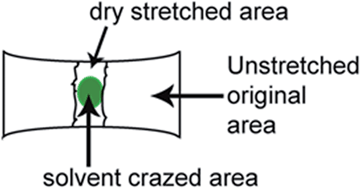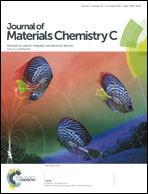Phosphorescent oxygen sensors produced by spot-crazing of polyphenylenesulfide films
Abstract
Phosphorescent oxygen sensors based on PtBP and PdBP dyes encapsulated in polyphenylenesulfide (PPS) films by the spot-crazing method are described. The new polymer matrix enables simple, one-step production of discrete, high-performance O2 sensors using a low toxicity solvent 2-butanone, low overall strain (8%), low amounts of solvent and precise spatial control. The resulting nano-structured sensor materials display markedly enhanced brightness, high photo-, mechanical and chemical stability. Their structural and physico-chemical properties were characterized by differential scanning calorimetry (DSC), wide-angle X-ray scattering (WAXS), optical microscopy and phosphorescence lifetime imaging microscopy (PLIM). The PPS sensors show a high degree of lateral and in-depth homogeneity on the micro- and macro-scale, as revealed by confocal microscopy, linear Stern–Volmer plots and single-exponential decays. Operating in phosphorescence lifetime mode, optimised sensors show stable O2 calibrations in the range of 0.1–100 kPa O2, low temperature dependence (linear in the range 10–50 °C), low cross-sensitivity to humidity and high reproducibility (RSD 1.5% at 21 kPa and 0.5% at zero O2). This technology facilitates the production of low-cost disposable O2 sensors and their integration in large scale industrial applications such as packaging.

- This article is part of the themed collection: 2014 Journal of Materials Chemistry C Hot Articles

 Please wait while we load your content...
Please wait while we load your content...